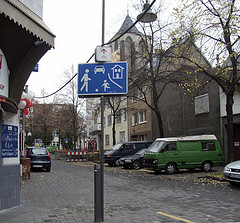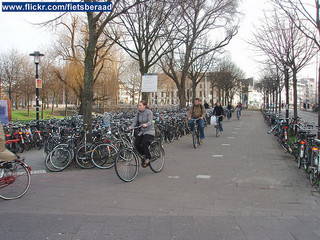 Next Saturday the hundredth edition of the toughest bicycle race on the planet will start, the Tour de France.
Next Saturday the hundredth edition of the toughest bicycle race on the planet will start, the Tour de France.
Dutch comics artist Jan Cleijne has written and drawn a book called Helden van de Tour (Heroes of the Tour) in which he reviews the past 99 editions.
Het Friesch Dagblad notes that with the hundredth Tour ahead of us, the market is about to be saturated with bicycle racing books. “But it looks like Helden van de Tour will be one of the winners. […] A jewel of a graphic novel.”
Sevendays.nl writes: “Comics artist Jan Cleijne visits all the historic highs and lows, from World War I to the scandal surrounding Lance Armstrong, and talks about what the Tour is all about: endurance. He lets us experience the blizzards, the puddles, a 70 metre drop, glorious victories and molten asphalt. His drawings take on the colours of the stories, ochre during the climb of an arid Mount Ventoux, gray during the hellish ride of 1926 through the Pyrenees.”
“The book is an homage to a race that is worthy of its legends, but it also puts the focus where it hurts,” Zeit Online writes. “The author, born in 1977, is an enthusiastic amateur rider himself and it shows. His voice is critical throughout the book but also emphatic. Precise and loving are the brush strokes with which the Dutchman paints both the drama of the famous riders and the small anecdotes that take place near the sidelines. […] It is a funny but also a serious book.”
You can find a couple of sample pages at Manners.nl under the ‘Klik dan hier’ link.

Illustration: “In 1951 the yellow jersey was worn for the first time by a Dutchman. His name was Wim van Est. He had never seen a mountain before in his life. The ascent was very slow. The descent was much too fast.” (Miraculously Van Est survived.)






 Next Saturday the hundredth edition of the toughest bicycle race on the planet will start, the Tour de France.
Next Saturday the hundredth edition of the toughest bicycle race on the planet will start, the Tour de France.

 When the city of Den Bosch expanded eastward in the 1980s, it gobbled up an old stretch of Meuse dike called Heinis. Originally developers wanted to build a business park there, but protests put a stop to those plans.
When the city of Den Bosch expanded eastward in the 1980s, it gobbled up an old stretch of Meuse dike called Heinis. Originally developers wanted to build a business park there, but protests put a stop to those plans.
 Although they say it took them more time than they had expected, Copenhagenize’s
Although they say it took them more time than they had expected, Copenhagenize’s